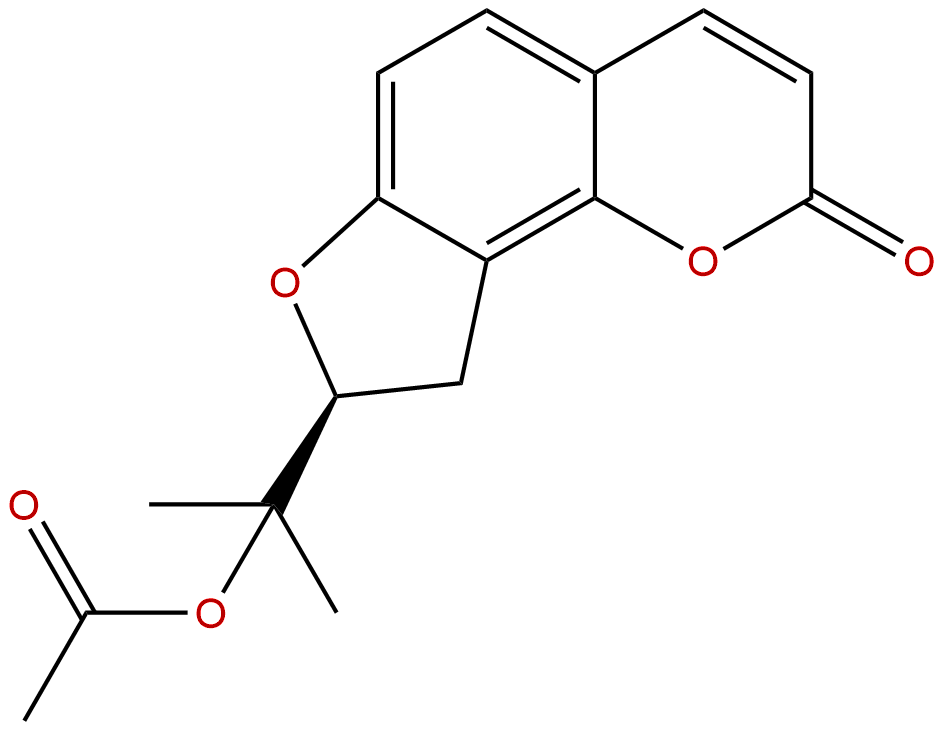Product name: Columbianetin acetate
Synonym name: Libanoridin
Catalogue No.: BP1604
Cas No.: 23180-65-6
Formula: C16H16O5
Mol Weight: 288.299
Botanical Source: From Ligusticum seguieri, Tordylium apulum and Libanotis schrenkiana
Physical Description: Powder
Type of Compound: Coumarins
Purity: 95%~99%
Analysis Method: HPLC-DAD or/and HPLC-ELSD
Identification Method: Mass, NMR
Packing: Brown vial or HDPE plastic bottle
Storage: Store in a well closed container, protected from air and light. Put into refrigerate or freeze for long term storage.
Whenever possible, you should prepare and use solutions on the same day. However, if you need to make up stock solutions in advance, we recommend that you store the solution as aliquots in tightly sealed vials at -20℃. Generally, these will be useable for up to two weeks.
The product could be supplied from milligrams to grams, up to kilograms
Inquire for bulk scale.
Descriptions:
Columbianetin acetate can be absorbed in whole intestinal sections and colon is the best absorption region of whole rat intestines.The increase of columbianetin acetate concentration has no effect on absorption kinetics,the absorption of columbianetin acetate is a passive diffusion process, not pH-dependent.[1]
Columbianetin may be helpful in regulating mast cell-mediated allergic inflammatory responses.[2]
References:
[1] Wu Y N, Luan L B. Chinese Pharmaceutical Journal, 2008,43(22):1719-22.
[2] Jeong H J, Na H J, Kim S J, et al. Biol Pharml Bull, 2009, 32(6):1027-31.
[3] Cai Q, Sha M, Yang S. Innovation and training in the agribusiness complex, CEDEFOP, European Centre for the Development of Vocational Training. 1999:1580-4.


